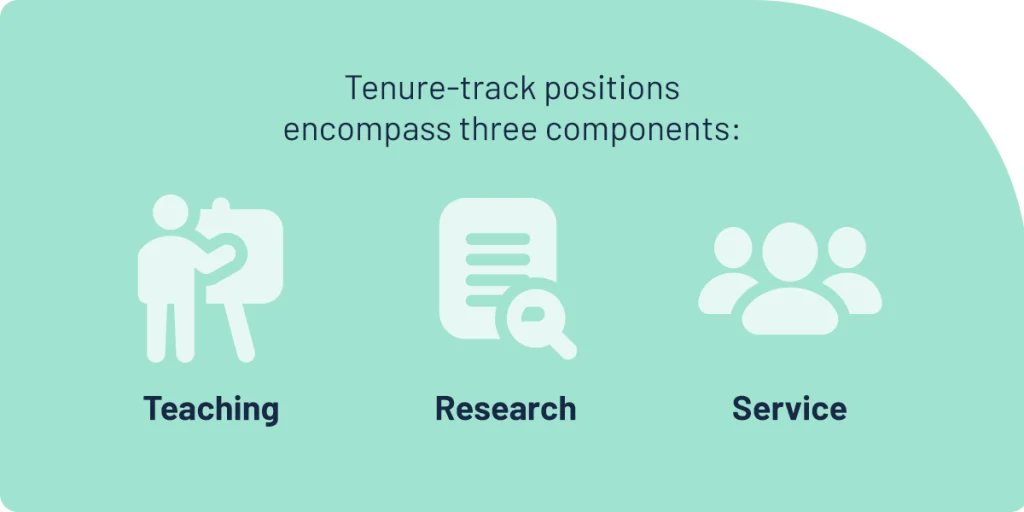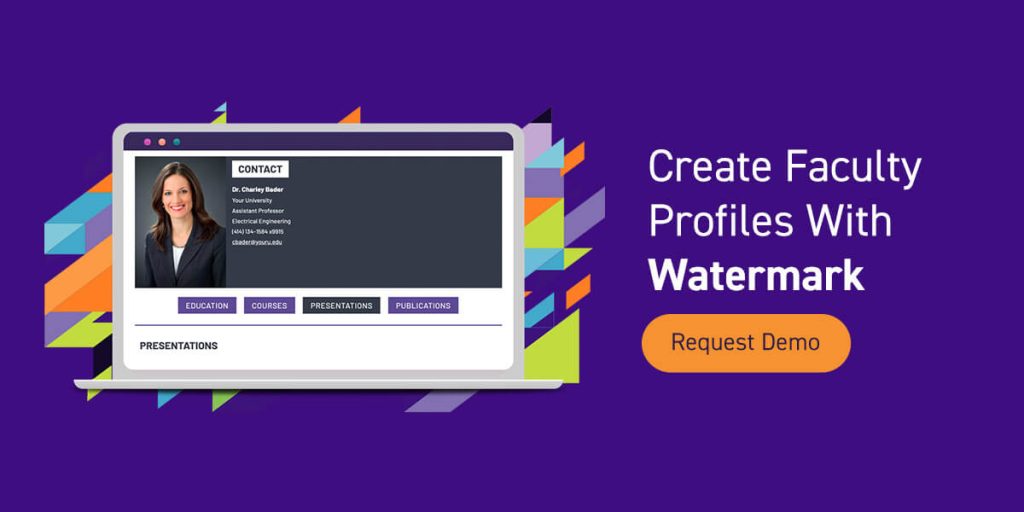



Tenure benefits every level of your institution. With highly qualified instructors who advocate for your students, you can be sure your learners engage in an enriching academic experience that guides them to success.
However, earning tenure is no easy feat. Many professors spend much longer than they need to achieve this status. Thankfully, faculty profiles can significantly simplify this task. They allow your institution to monitor each instructor’s professional information and achievements so your college or university can gauge each member’s readiness and worthiness of tenure.
Learn how achieving tenure status and leveraging faculty profiles simplifies the tracking of your institution’s top instructors.
Tenure is an academic appointment that ensures decision-makers cannot fire professors except under extreme circumstances. This accomplishment encourages faculty and staff to speak freely without fear of reprisal. Achieving tenure status takes time and dedication.
Professors typically embark on a tenure track, participating in a probationary period that lasts around seven years on average. During this time, instructors must demonstrate excellence in service, research, and teaching to the community.

Tenure-track positions encompass three components:
This track typically takes multiple years to complete, and each institution may place a different emphasis on those three items during the probation period. For instance, one college may expect educators to dedicate the largest percentage of their efforts toward research, while another university encourages instructors to spend most of their time teaching.
After exceeding these expectations, a tenure-track professor can seek tenure. However, even after meeting an institution’s requirements, some professors do not achieve this accomplishment because there is a limited number of available positions. If all the tenure positions are full and there’s a queue of people waiting for approval, instructors may take far longer to achieve tenure than they initially expected.
Tenure is a safeguard for instructors, ensuring they can speak up for their students without fear of losing their jobs or facing another form of retaliation. It enables educators to speak freely about institutional policies and changes directly affecting student learning experiences. This environment enhances learning quality and encourages professors to teach an engaging curriculum as they continue researching their field. Constant research and continuing education benefit society, making tenure a public service practice.
Additionally, tenure ensures educators’ job security, eliminating the possibility of losing their jobs unfairly. Institutions cannot fire their tenured employees without a proper hearing. Tenure helps prevent workplace discrimination, as decision-makers cannot fire educators due to race, religion, ethnicity, sexual orientation, or age. This policy ensures layoffs are fair for every employee rather than allowing decision-makers to dismiss those who remain at the top of the pay scale or advocate for students.
Offering tenure benefits your institution, students, staff, and the public. With tenure comes a freedom that allows instructors to explore their fields in-depth, find more time to mentor students, engage with community service, and provide high-quality learning experiences. Tenure can foster a positive learning environment that supports academic growth and public service.
Other advantages include:
Professors first need to get on the tenure track. They will need to understand their institution’s teaching, research, and service expectations. Though many colleges and universities explain the tenure track during the hiring process, professors must ensure they follow the path and undergo tenure-track faculty review.
At many institutions, applying for academic tenure involves crafting a portfolio, which is an excellent place for instructors to document their evaluations, university and community service, recommendation letters, and publications. Many tenure portfolios are comprehensive, and it can take years to gather a worthwhile compilation of achievements.
Once an instructor is ready to apply for tenure, their portfolio and application will go to a review committee. This committee typically consists of other tenured staff members, so they should try to form good relationships with those in their department and others they see frequently.
After reviewing the application, the instructor’s department will send the portfolio to a school committee and a university-level committee. The application will move from the university committee to the president’s or provost’s desk, where they will officially receive tenure approval. If a professor does not achieve tenure, most colleges and universities have a formal appeals process they can follow if they wish to stay at their institution.
Faculty profiles are flexible pages of faculty information. Some profiles require more information than others, but typical items include:
Faculty profiles may include personal information, such as a photograph, brief biography, or a list of interests. They may also list office hours, presentations, areas of interest, and ways to contact them.
Besides being helpful for your team, these pages are an important recruiting tool. They can help students decide whether they want to attend an institution or enroll in a specific program. Faculty profiles help prospective students gauge the quality and value of your academic courses. If they can see all your staff has accomplished, they may feel more inclined to enroll at your institution.
Faculty profiles can also save your staff valuable time and energy spent managing and assessing different instructors. Reduced workloads mean more time to pursue other important initiatives.
Your higher education institution can monitor and track tenure progress with ease using faculty profiles. These pages provide your team with structured documentation that showcases the critical information needed to gauge tenure achievement. The profiles act as a centralized repository of teaching staff information that streamlines the process of assessing whether or not an individual meets your school’s specific requirements for tenure consideration.
By regularly updating these profiles, your institution can ensure it has the latest and most comprehensive faculty details, including new research publications, timely awards, or service contributions. Your school can utilize each faculty profile to carefully track the professor’s advancement and evaluate their accomplishments versus the predetermined tenure track. Having these records is essential for keeping this process organized and streamlined.
The right software will effortlessly sync faculty insights to your institution’s website, giving web visitors access to the most up-to-date and relevant information regarding your faculty’s achievements. A desirable solution will also enable your college or university to import customized curriculum vitae (CV) information directly to your faculty profiles, saving both time and energy.
Faculty profiles make providing feedback and support to your faculty members simple. Your institution’s department heads or faculty mentors can review the document and offer guidance on how an individual can get closer to earning tenure by addressing any potential areas of improvement.
Ultimately, faculty profiles serve as a comprehensive resource for your higher education institution to see evidence of the academic achievements, contributions, and professional success of your teaching staff.
If your higher education institution is ready to leverage faculty profiles to manage and track tenure progress, turn to the solutions from Watermark.
With Watermark Faculty Success, you can showcase your instructors’ achievements and easily support their professional growth. You can create comprehensive profiles that encourage faculty to keep moving forward. Configure reports with data collection to reflect on your institution’s processes, perspectives, and unique categories. Your staff can turn data into action and ensure they always stay on top of their game.
Are you interested in seeing the higher education software from Watermark in action? Request a demo online and get started today.






























































































































































































































































































































































































